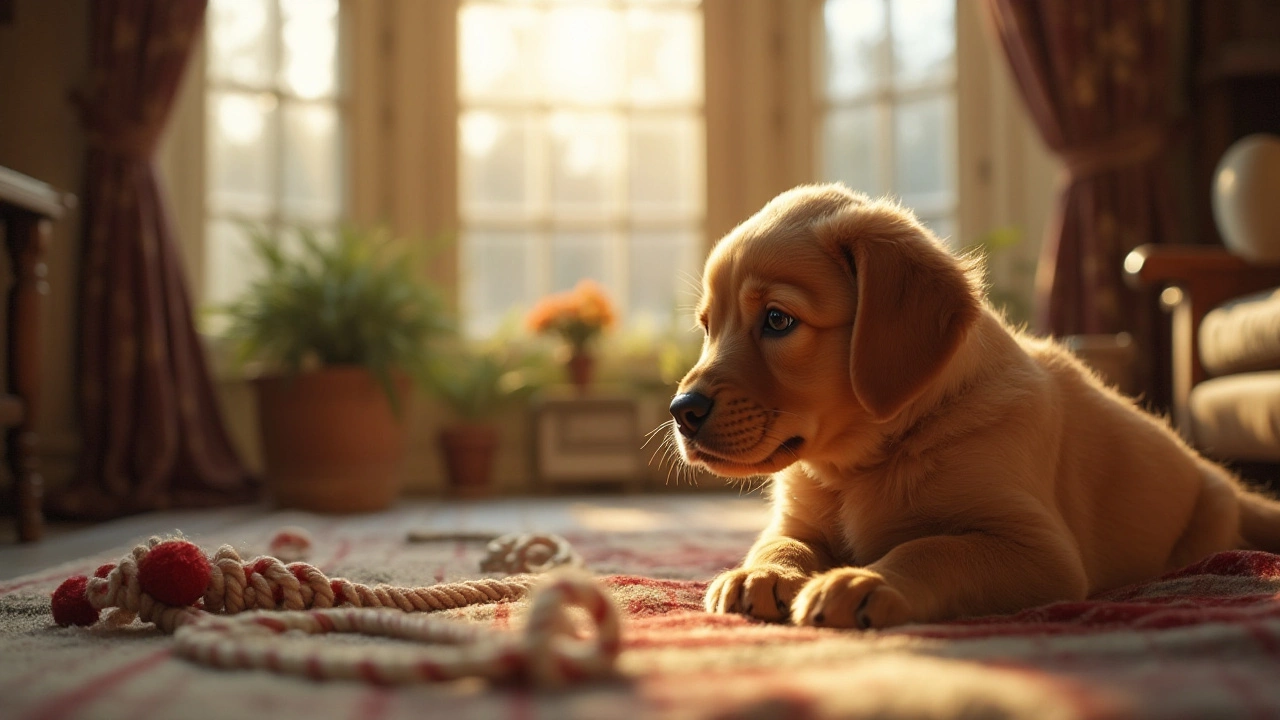How to Leave Your Puppy Alone Without Panic
First off, it’s normal to feel a bit uneasy about leaving a young dog unsupervised. Puppies are curious, they love exploring, and they need a safe space while you’re away. The good news? With a few sensible steps you can set up a routine that works for both you and your furry friend.
Why Puppies Need Supervision
Puppies haven’t yet learned what’s okay to chew, where to go potty, or how to calm themselves when they hear a doorbell. Without guidance they might chew furniture, have an accident on the rug, or get scared by a thunderstorm. These behaviours aren’t bad characters – they’re just learning gaps. By giving them a clear, puppy‑proof area you reduce the chance of damage and help them start good habits early.
Think of the space as a mini‑home base. A crate, a playpen, or a puppy‑proofed room works as long as it’s comfortable, safe, and stocked with the right items. The goal isn’t to lock them up forever, but to provide a calm spot where they can rest, chew a toy, and stay out of trouble until you return.
Practical Steps to Keep Your Puppy Happy When You’re Not Home
1. Choose the right confinement. A crate should be big enough for a puppy to stand, turn around, and lie down. Add a soft blanket and a chew toy. If your puppy hates crates, a playpen with gates works just as well.
2. Create a routine. Puppies thrive on predictability. Try to leave and return at the same times each day, even on weekends. A short “goodbye” cue (like a wave and a calm voice) signals that you’ll be back, which eases anxiety.
3. Offer safe chew items. A frozen Kong stuffed with peanut butter or a rubber chew toy keeps teeth occupied and can even soothe sore gums during teething.
4. Set up bathroom breaks. Before you leave, take your pup outside for a final potty break. If you’re away for longer than a couple of hours, consider a dog‑door to a fenced area or a potty pad inside the confined space.
5. Keep the environment quiet. Turn down loud TVs or radios. Soft background music or a white‑noise machine can mask sudden noises that might startle your puppy.
6. Gradually increase alone time. Start with five‑minute departures, then work up to longer stretches. Celebrate each successful solo session with praise or a treat when you return.
7. Use technology wisely. A pet camera lets you check in and talk to your pup. Some models even let you dispense treats, which can be a good distraction during a short solo period.
Remember, the aim isn’t to isolate your puppy forever, but to teach them that being alone for short periods is safe and normal. Over time they’ll learn to rest quietly, play independently, and signal when they need you, making life smoother for both of you.
Finally, stay patient. Some puppies may whine at first, but consistent routines and a calm demeanor will show them that you’re still in charge, even when you’re out the door. With these steps, you’ll feel more confident leaving your puppy alone, and they’ll grow into a well‑behaved companion.

Can You Safely Leave a Puppy Alone for 8 Hours? Tips and Toys for Happy Puppies
Leaving a puppy alone for an extended period can be challenging for both the owner and the pet. Young dogs have specific needs and require a lot of attention and care, especially in their formative months. By choosing the right toys and taking certain precautions, owners can ensure that their puppies are comfortable when alone. It's crucial to understand a puppy's needs, how to keep them entertained, and when it's safe to leave them alone for extended periods.
View more